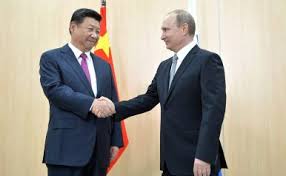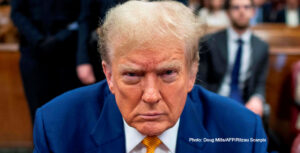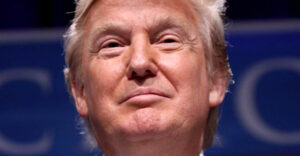Fra Unicredit
1. The characteristics of recent market moves, and what it tells us.
My contention is that recent months’ shift in the Fed’s policy message and the increasing prospect of the pandemic now moving
towards an endemic (bringing us back from internet shopping and entertainment towards real life activities) have triggered most of the market volatility so far.
But these past couple of weeks, the geopolitical concerns have started to show up in markets beyond energy, if only marginally so. Yet, if there is a Russian invasion, sanctions will be introduced which, in turn, would very likely lead to counter-measures by Russia. While unquantifiable in any exact way, I’d suggest that the impact on markets of this dreadful scenario is so great that present market pricings imply that people think the invasion-scenario is very small indeed. I sure hope they are right.
Consider this: First, sovereign bonds were well bid this past week due to geopolitical concerns (10Y UST yields dropped to
nearly 1.70% on Monday), but then came Jay Powell and his hawkish remarks, and 10Y UST yields were back at 1.85%. The
price action clearly suggests that the underlying trend is for higher yields, as long as the geopolitical picture does not get more
complicated. So, back to the eternal question: How will the expected higher UST yields affect equities?
I’m pretty relaxed. US yields posted an impressive rise of almost 50bp between mid-December and mid-January – and almost
entirely driven by higher real yields! During this period, the S&P recorded a relatively modest 4% loss, while the more rate
sensitive tech stocks were hit much harder, with a drawdown of 8.5%. Illustrating the market’s relative comfort with weaker
equities of this magnitude, there was very little feedback loop back into UST yields. EUR-USD traded sideways as Fed policy
was by and large already discounted and the rise in 10Y yields was mainly a term premium story.
Then the escalation of the military threat entered on stage, putting additional pressure on equities, driving the VIX up and the
dollar stronger. USTs received support from flight to quality (ca. 20bp peak to trough), but it all faded again after the FOMC
meeting. Bunds decoupled from Treasuries only up to a point during both phases.
On Friday, 10Y UST yields were at 1.77%, 10Y Bunds at -0.05%, the S&P 500 is down 7% YTD while the Nasdaq 100 is down 12% and VIX is close to 28. In comparison, the pressure on European equities has been less pronounced, supported by their lower valuations, but also their greater reliance on good old growth industries. The Euro STOXX 50 is down 3.8% YTD, but within the European index, Energy, Banks,
Basic Resources and Insurance are all up 5%-9%. This is also reflected in the MSCI Europe Value index, which is up 4% YTD,
while its US cousin is down 5%.
As my colleague, Christian Stocker, Sr. Equity Analyst with one of the finest track records in the market, has pointed out, it’s
quite remarkable – indeed unusual – that Europe is doing better than the US in times of rising geopolitical tensions. Normally,
the US as a safe haven is performing better in such periods. Tricky times indeed, but my colleagues in our Strategy Research
team have done a considerable amount of work on all this. Do reach out to any of them if you want to discuss it in greater
detail.
My bottom line – to whet your appetite for the next two sections – is this: The market story is still predominantly a Fedadjustment story, rather than a geo-political story – and I’m not sure that markets have gotten this one right! Any likely amount of Fed tightening is unlikely to become a problem for financial markets, while Russia could easily become a major problem!
3. Russia may have overplayed its hand, but is there a way of climbing down? I’ll offer the following possible objectives for Putin’s threat of a military invasion of Ukraine: (i) A genuine feeling that he has been betrayed by the West following the collapse of the Soviet Union more than 30 years ago, and that the perceived “encirclement” of Russia by NATO needs to be halted and pushed back;
(ii) and obviously related, a desire to puncture perceived US global hegemony and restore Russia as a comparable global power; (iii) a fear of developments which could lead to well-functioning democracies in former Soviet republics which – in turn – might inspire similar developments in Russia, and (iv) a desire to split Europe in as many ways as possible, including away from the US, between individual European countries and within coalition governments, most prominently in Germany.
From what I understand, there is no way for the West to be willing/able to adequately address the three first objectives. I suspect the written replies to the Russian demands from the US and from NATO include some diplomatic language to that effect, but whether there is enough for Putin to declare victory and climb down I don’t know. Maybe – just maybe – Ukrainian President Zelensky’s surprise statement on Friday that the threat of war now is not greater than it was last year, and that Western leaders are causing panic by overstating the likelihood of war, could be part of a greater effort to provide an acceptable compromise and a climb-down?
So long as the parties talk, there is hope, but it feels difficult to be an optimist here. Whichever way it’ll play, I’ll suggest that Putin has failed rather miserably in his attempt to drive a wedge between the US and Europe, and between European countries, including within NATO: First, following President Obama’s shift to orient US foreign policy more towards the Pacific than Europe, which was both turbocharged and utterly confused during the Trump years, the US policy response to the Russian threat against Ukraine and Europe more broadly has been nothing but impressively robust.
Second, while there certainly has been a degree of conflicting statements between several European countries, including France and Germany, this is really nothing beyond the normal, and expected, and subsequent clarifications by President Macron put any such concerns to bed. Moreover, it was German Foreign Minister Baerbock, who more than anyone else articulated – in Moscow at the press conference with her Russian counterpart Lavrov – the clearest European reply of all to the Russian demands. And when the German head of the navy expressed a degree of sympathy for the Russian stance, which was interpreted by the foreign media as a sign of the true thinking of the German elite, he resigned in a rush.
Other usual socalled “Putin-versteher” in the German public debate, but also the far-right political parties in France, Italy and Austria, have been remarkably quiet in this debate. Third, yesterday’s outcome in Rome, i.e. a “re-appointment” of President Mattarella and PM Draghi, must be just about the least favored outcome from Putin’s perspective. Looking across the Italian political landscape I struggle to find anyone more deeply committed to European integration anchored in Atlanticism, than Mario Draghi.
Fourth, the reactions to Russia’s demand that NATO pulls back from its borders have so far included a statement that NATO’s policy of being open to new members is non-negotiable and a public debate in Finland and Sweden whether they should join NATO as well. Without a doubt, an invasion would surely lead to further NATO build-up in Europe, possibly even via new members. The combined lesson for Moscow so far must be that a Russian invasion of Ukraine, however limited, would significantly shift European public opinion and politics further towards a common response around sanctions.
In addition to the price in casualties and money, and the headache of keeping a foreign country occupied, how does Putin evaluate the bi-product of an invasion in 30 January 2022 Macro Research Sunday Wrap UniCredit Research page 5 See last pages for disclaimer. the form of a measurable shift towards unifying Europe, while strengthening NATO commitments across the Atlantic and maybe seeing it expanded further into Scandinavia, after all these years of working on the opposite outcome?
Furthermore, while the much anticipated (by the usual sceptics) of a visible split within the new German coalition towards Russia has not happened, the dilemma across the Atlantic, within the Republican Party, of how to react to Putin’s threat has been brought to the fore. The GOP always had an isolationist wing, but the leadership has remained strongly internationalist and committed to NATO – until Trump tore all that up with his embracement of Putin and attacks on NATO. Trump’s hold on the party, and his demand of total loyalty by every elected Republican to even his most wacko views, has, of course, created this horrible picture of a GOP in disarray as its rushing for a dark place beyond the normal definition of democracy.
But then comes Putin’s threat of military action, placing a very long list of GOP leaders and pundits between a rock and a hard place – between their loyalty to Trump and his obedience to Putin vs long held GOP commitments to foreign and security policies – threatening to throw a spanner in the GOP-wheel ahead of mid-term elections, if not even in the juggling for the next presidential campaign. This all leads me to conclude that the West’s reaction to the Russian threat against Ukraine has been stronger and more unified than Putin is likely to have expected.
This, in turn, may have contributed to the further, and more recent escalation. But whether we have reached a point of no return (Anton Chekov’s gun has certainly entered the play), or whether there is an acceptable path on which Putin can climb down, I don’t know. But I think we’ll find out within the next few weeks; the present state of affairs is not sustainable. If, against all hope, it leads to an invasion, we should assume it’ll lead to a new set of comprehensive and deep-reaching sanctions on Russia, which may very well lead to further restrictions by Russia on Europe as well.
The elephant in the room is gas, of course. Europe gets roughly 40% of its natural gas from Russia and while – with a bit of help on the weather front during the remaining winter – stored gas and other sources will get us through to the spring, should the Russian taps be closed longer-term there would be a very substantial economic price for Europe to pay, as laid out in this brand new, excellent paper by Bruegel: Can Europe survive painlessly without Russian gas?
Importantly, however, Gazprom has never cut its gas deliveries to Europe below existing contracts. Were they to do so as part of this conflict, thereby explicitly politicizing gas, there can be little doubt that the Rubicon of European public and political attitudes towards Russia as a commercial partner will be crossed, with long term damage inflicted on this already complex relationship. We shall see… And on that note, I’ll move from my desk to a different chair and look out of a different window – as I have done this past week. With a bit of luck, I’ll test negative tomorrow or Tuesday, and normal life will return.






